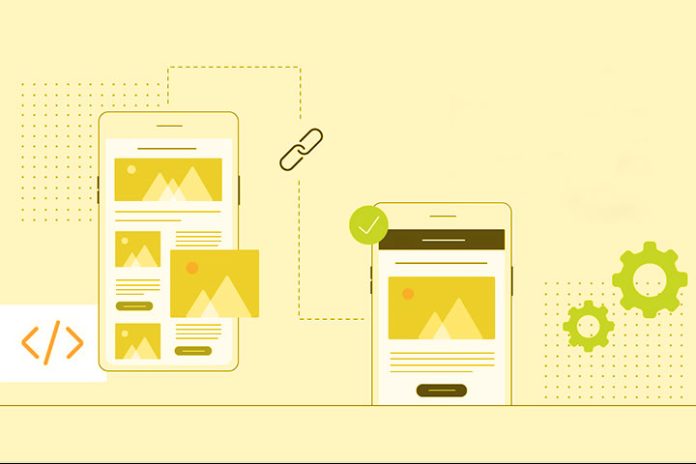As regular Internet users, it is likely that at some point, you have encountered the so-called “deep links” or deep links during your browsing. These specialized links are valuable resources that improve the consumer experience and are fundamental to the success of a strategy in the digital environment. In addition, they facilitate the purchasing process and can significantly increase sales volume.
What are Deep Links?
Deep links are links that can take users directly to specific sections, pages, or functions within a website rather than redirecting them to the home page or more general areas. These links are an invaluable tool to improve the user experience by allowing direct access to relevant content without having to navigate from the initial point.
To better understand how it works, let’s consider a practical example: Suppose you are exploring an e-commerce website that sells shoes. If the site uses Deep Links, you will be able to click on a link that will take you directly to the “Winter Boots” section or a specific page of a product instead of starting from the home page and manually searching the boots section.
These specialized links are usually used in mobile applications or websites with the aim of improving usability and navigation for users. Instead of simply directing users to the main page, deep links provide a more fluid and direct experience, taking them precisely to the content or feature they want to access.
Also Read: SEO: 15 Ranking Factors Remarked On By Google
The Deep Links are mainly divided into two types, each with its specific functionality:
Standard Deep Link
Standard Deep Links are specialized links that redirect users to particular sections within a web page. These links are designed to work through a standard web browser and are accessible to all users. The effectiveness of this type of link lies in its ability to direct users to specific content within a website regardless of the device or operating system they are using. For example, a Standard Deep Link can lead a user directly to a specific section of an online catalog, to a product page, or to a team of detailed information about a service, significantly improving the browsing experience.
Delayed Deep Link
Delayed Deep Links are particularly relevant in the context of mobile applications. When a user clicks on a Delayed Deep Link to an application that they do not have installed, instead of taking them directly to the desired section, this type of link redirects the user to the corresponding application store to download the application in question. Once the user has downloaded and installed the app, Delayed Deep Link is activated to take the user directly to the specific section of the app that they had initially selected. This functionality is handy for increasing app engagement and adoption, eliminating initial friction by guiding users to particular features or content within the app once they install it.
In summary, while Standard Deep Links focus on redirecting users to precise sections within a web page through conventional browsers, Deferred Deep Links are crucial in the field of mobile applications, allowing downloading and subsequent redirection to specific areas of applications once installed. These two types of deep links play different roles, but both contribute significantly to improving navigation and user experience in the digital environment.
How to implement Deep Links effectively
The correct implementation of deep links in your strategy requires considering the operating system, whether iOS or Android. To generate these specialized links, there are specific generation tools, or you can count on the support of expert developers in the field.
The strategic integration of deep links in your campaign texts or content is essential to guarantee their effectiveness. It is crucial to avoid using generic terms such as “click here” or “click this link,” as these do not generate trust in users and can be perceived as intrusive advertising. On the contrary, it is more effective to incorporate them organically into the content, using relevant phrases and words that clearly indicate to the user where they will be directed when clicking. Terms such as “get tickets for the event
Key Benefits of Deep Linking
Significant Improvement of User Experience: The deep links enable more agile and effective navigation, providing a more satisfactory experience for users. This factor increases the chances of conversion and loyalty by simplifying the user’s interaction with relevant and desired content.
SEO Boost for Websites and Electronic Commerce
Deep links act as essential allies to reduce high bounce rates by making it easier for users to explore different sections of a website. This action can significantly improve time on site, an essential metric for SEO. Likewise, these specialized links allow more precise and efficient indexing by search engines, enhancing the visibility and positioning of the website.
Analysis and Monitoring of the Customer Journey
By guiding users within the same digital environment, Deep Links offers valuable information about customer behaviour. This gives brands a deeper understanding of their users’ browsing patterns, allowing them to identify areas for improvement and optimize the user experience more accurately and strategically.
In summary, Deep Links represent essential tools in the vast digital world. They not only optimize navigation but also strengthen marketing strategies by precisely directing users to relevant content. Additionally, the ability to provide detailed insights into user behaviour makes them crucial to understanding and continually improving the customer experience. Consequently, deep links emerge as critical pieces to achieve success and effectiveness in the increasingly competitive digital environment.

